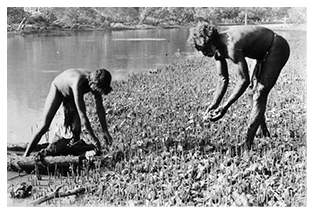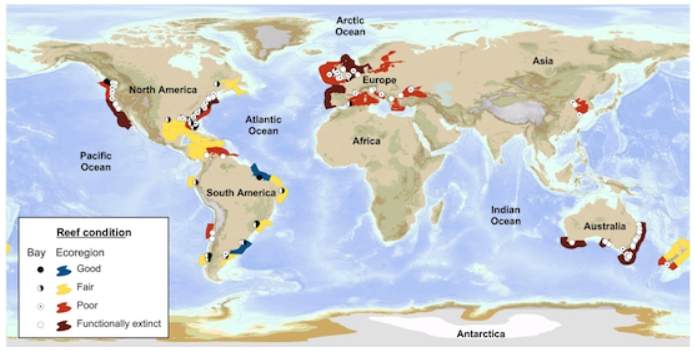Shellfish reefs are at risk. Globally, it is estimated 85% of oyster reefs have been lost — even greater than the losses reported for other important habitats including coral reefs, mangroves, and seagrasses. Although shellfish reefs are beginning to receive some conservation attention, they remain an obscure ecosystem component and still are vanishing at alarming rates.
Prior to the 20th century, shellfish reefs were common features of estuarine and coastal systems and were of importance as a food source for Indigenous Australians, with considerable quantities of reef-forming species occurring in coastal food middens. Early maritime explorers such as Cook, Flinders, Eyre and Vancouver regularly referred to extensive shellfish reefs in voyage reports and journals. From early European settlement of Australia, vast quantities of oysters and mussels were harvested for food and as a source of lime for mortar used in the early construction of roads and buildings.

Throughout the 1800s and early 1900s, dredge and hand-harvest oyster fisheries were likely to have occurred in over 150 locations across eastern and southern Australia, including major coastal embayments such as Moreton Bay, Sydney Harbour, Port Phillip Bay, Gulf St Vincent, Derwent River and Princess Royal Harbour. As shellfish resources closest to Australia’s first settlements rapidly became depleted, shellfish fisheries expanded to include more distant bays and estuaries. Whilst the total State or or Australia-wide catch for any one year is unknown, records from single estuaries (e.g. 10 tonnes per week for Western Port, Victoria; 22 million oysters per year from 5 estuaries in Tasmania) indicate oyster fishing constituted some of the largest and most valuable fisheries, and indeed one of the most valuable marine industries, of the 1800s.

From historical fishery reports and media articles it is clear that early harvesting efforts were unsustainable, which led to the regulation of shellfish fisheries from as early as 1853 in Tasmania and South Australia. The oyster industry was the first (of any) fishery to be regulated by legislation in South Australia, Tasmania and Victoria, with New South Wales, Queensland and Western Australia to follow within 30 years. Yet the regulation of shellfish harvesting did little to halt the destruction of shellfish reefs and by the late 20th century, shellfish reefs had all but disappeared, with all major oyster fisheries close by 1960.
Today, only a fraction of natural shellfish reefs still survive. Poor water quality and sedimentation as a result of catchment clearance, urbanisation and industrial pollution and diseases such as Queensland Unknown(QX) and Bonamia likely exacerbated the loss of historic shellfish reefs and may hinder their natural revival.









